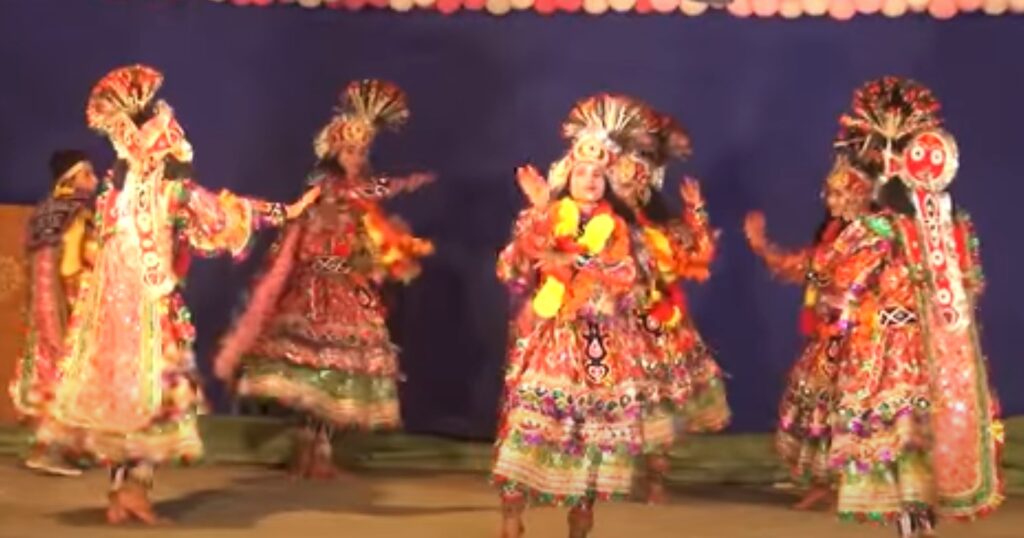The Eastern state of Orissa is known for being home to many traditional dance forms of the tribes. A fine example is the Ghumura dance that is prevalent in the Kalahandi district. This tribal dance has a touch of classical dance in its elegance.

Origins of Ghumura Dance
Apart from historical proofs, there are multiple myths and opinions that say a lot about the origin of the dance Ghumura. The dance acquired its name from a musical instrument that is used for the performance. The instrument is Ghumura Naat, which is believed to have been formed by the combination of Lord Shiva’s Damru and Goddess Saraswati’s Veena. The formation of such a powerful musical war instrument is described in a book about Hindu mythology called the Chandi Puran. It is the story about the killing of Mahishasura by Goddess Durga after combining the weapons of all the powerful Gods and Goddesses.
The Ghumura dance is a representation of victory over evil that the tribes now perform. This dance was first performed near the Indravati river valleys, and there are multiple ancient paintings to prove the same. The tribes now perform Ghumura as part of a religious ceremony to motivate the warriors of the tribe during tough times, such as wars.
Key Features of Ghumura Dance Performance
The Ghumura dance is done only by the male members of the tribes. No females take part in the dance. It is a highly energetic performance, done to uplift the spirits of the soldiers before war times or during challenging times of the tribe. Earlier, Ghumura was done after completing the Chitalagi-Amavasya rituals. It was the worship of the new moon. However, nowadays the tribes of Kalahandi perform Ghumura only during festivities for entertaining the crowd. The religious significance has faded with time.
The essential elements of Ghumura are the music from the Ghumura Naat instrument and the costumes. The formations during the dance can differ among groups. Some form a straight line, while others form geometrical patterns and shapes like triangles, circles, or squares for the dance. The number of performers can range from 15 to 40. The Ghumura dance is performed on open grounds in the tribal village. The entire performance is accompanied by the beats of a musical instrument and folklores. The combination of music, dance moves, and colorful costumes is a treat to the eyes. The dance is an integral part of the tribal culture in Orissa.
Costumes
The dancers wear attractive attires for performing Ghumura. The dhotis worn are usually of silk or satin material that gives a shiny look. On the top, men wear contrasting shirts with bold sleeves. A turban adorned with peacock feathers or flowers is also part of the costume. Dancers also wear jewelry like anklets, earrings, necklaces, and armlets made of silver metal. The entire look is catchy and enhances the act.
Music
A dance is never complete without some music. Ghumura dance is performed on the beats of a certain type of drum called Ghumura Naat. The instrument is tied to the waist of some dancers and a rope goes around the neck to balance it. Like every folk dance, Ghumura is also done with some folk songs sung by the dancers as they perform.
